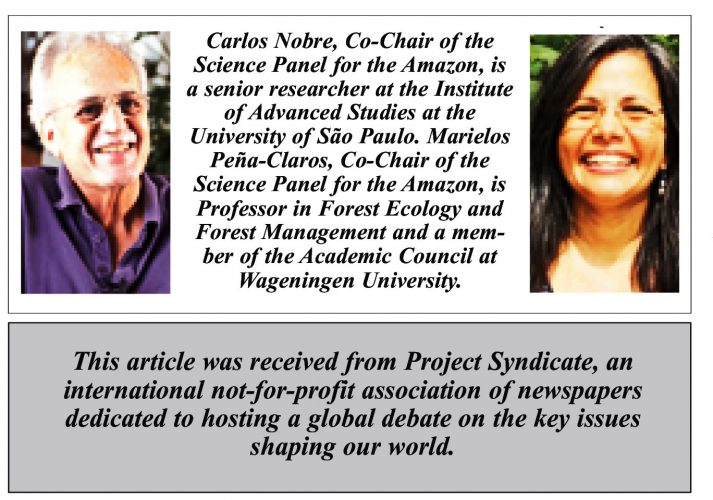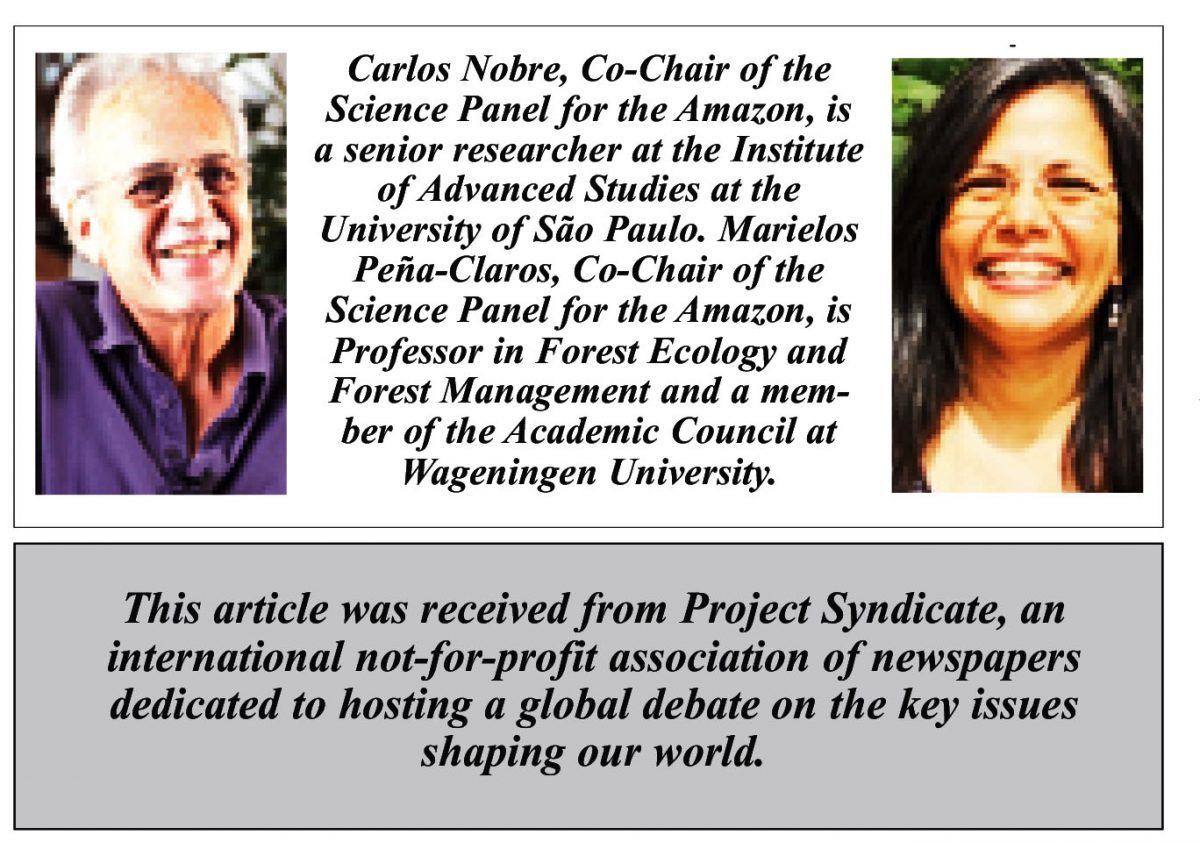
SÃO PAULO/WAGENINGEN – This year has been the warmest on record, with climate change causing more frequent and intense heatwaves, wildfires, floods, and droughts. The Amazon, home to more than 10% of the world’s known biodiversity, has not been spared. The return of El Niño, a band of warm water in the equatorial Pacific Ocean, and record-breaking North Atlantic Ocean temperatures have contributed to one of the most severe droughts recorded in the region’s history, affecting at least 600,000 people and countless plants and animals.
At this critical moment, it is in the interest of all countries to view the United Nations Climate Change Conference (COP28), currently underway in Dubai, as an opportunity to agree on the future of the world’s largest tropical rainforest. The Amazon plays a crucial role in shaping the global climate: it stores 150-200 billion tons of carbon; cycles large amounts of water vapor from the soil to the atmosphere, like a massive air conditioner; and influences rainfall across South America and beyond. Its conservation is fundamental to any realistic climate mitigation or adaptation agenda.
Such an agenda is incompatible with business as usual. Deforestation, land degradation, and global warming are increasing tree-mortality rates, in turn reducing the capacity for moisture recycling, exacerbating wildfires, and diminishing forest resilience. This is pushing the region toward a catastrophic tipping point, which would result in a large-scale forest dieback, the release of between 110 and 275 billion tons of carbon dioxide into the atmosphere, a global temperature rise of 0.1-0.2° Celsius, and destabilization of other parts of the Earth system. If this tipping point were crossed, it would be almost impossible for the world to keep global warming below 1.5oC, the target set by the 2015 Paris climate agreement.
Moreover, the belief that standing forests do not contribute to socioeconomic development has exacerbated non-environmental pressures on the Amazon, including severe social inequality, conflicts over land rights, widespread poverty, illicit extractive activities, and weak governance institutions. These conditions have resulted in the destruction of ecosystems, chronic violence, and the displacement of indigenous peoples and local communities. Worse, the groups being displaced are among the most effective stewards of the Amazon, forming a bulwark against climate change that safeguards 10-20% of the global forest carbon stocks.
To protect and prevent the Amazon from reaching ecological and socioeconomic tipping points requires a paradigm shift at both the global and national levels. A report published by the Science Panel for the Amazon (SPA), a group of more than 250 scientists convened under the auspices of the United Nations Sustainable Development Solutions Network, outlines what is needed.
The report calls for conserving, restoring, and remediating terrestrial and aquatic systems; strengthening Amazonian governance by using participatory processes of engagement; and developing a new socio-bioeconomy of healthy standing forests and flowing rivers. Only by reconciling economic and ecological security and prosperity with social justice can we create a new roadmap for socioeconomic development that improves indigenous communities’ living standards while protecting the environment that sustains their existence.
Conserving the Amazon demands immediate action. While world leaders have promised to end and reverse deforestation by 2030, little progress has been made, beyond establishing intergovernmental partnerships and making lofty promises. But the developed world has yet to deliver on its promise to provide $100 billion in annual climate finance to the Global South, and few countries have followed through on increasing their nationally determined contributions (emissions-reduction targets).
At the regional level, this summer’s Amazon Summit ended with Brazil, Bolivia, Colombia, Ecuador, Guyana, Peru, Suriname, and Venezuela declaring their commitment to strengthening cooperation to protect the region’s forests and promote sustainable and inclusive development. But they failed to set a deadline for ending deforestation, illegal gold mining, and oil exploration in the Amazon.
All hope is not lost. Brazil, Peru, and Colombia have reported declining deforestation rates in 2023, and recent political developments indicate that there is growing momentum to conserve the Amazon. Moreover, Amazonian countries, indigenous people, and global supporters have high expectations for COP28. The Amazon Summit and the resulting Belém Declaration laid out what the region aims to achieve at COP28 – goals that are closely linked with this year’s themes – and how it can benefit from the annual summit. The SPA has also launched a series of policy briefs for COP28 that synthesize the region’s key priorities and opportunities for action.
Chief among these goals is an immediate moratorium on deforestation and degradation in areas already approaching a tipping point, and an end to deforestation and degradation by 2030. This will help preserve the integrity of the Amazon’s biodiversity and ecosystems and ensure that it can continue to regulate the global climate. It will also be necessary to invest in and expand conservation and monitoring efforts, sustainable-forest management, large-scale forest restoration, and landscape remediation; to combat illicit activities; and to preserve indigenous land rights by bolstering collaborative efforts and enhancing public policies.
To secure a sustainable future, we must shift to a socio-bioeconomy based on healthy standing forests, flowing rivers, and empowered local communities. Such a model would recognize the importance of safeguarding frontline environmental defenders, and promoting inclusive decision-making processes. To achieve these goals, it will be crucial to mobilize financing, attract technology investments, and forge partnerships at COP28.
COP28 is a major opportunity to ensure the Amazon’s survival and well-being. But as the world’s largest forest, critical for climate regulation and global biodiversity, comes perilously close to environmental tipping points, we need to take drastic and immediate action.
Carlos Nobre, Co-Chair of the Science Panel for the Amazon, is a senior researcher at the Institute of Advanced Studies at the University of São Paulo. Marielos Peña-Claros, Co-Chair of the Science Panel for the Amazon, is Professor in Forest Ecology and Forest Management and a member of the Academic Council at Wageningen University.
Copyright: Project Syndicate, 2023.






